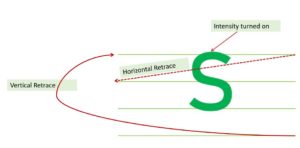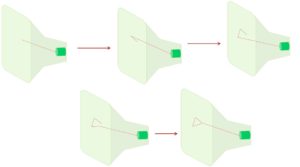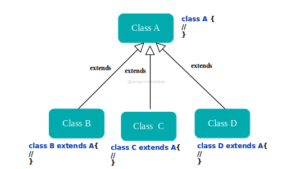In Computer Graphics, Raster scan and Random scan are techniques used to render pictures on a screen. Both techniques are different in the manner they use to draw a picture on a monitor.
Random scan is also popularly known as vector display. Let’s see the detailed explanation and what is the difference between the display techniques.
Difference between Raster Scan and Random Scan
| Basis | RASTER SCAN | RANDOM SCAN |
|---|---|---|
| Picture Definition | Picture definition is stored as an intensity value which results in it to have less Resolution | It stores picture definition as a set of line commands which results in high resolution |
| Electron Beam Direction | The electron beam is directed from top to bottom and one row at a time on screen, but it is directed towards the entire screen | The electron beam is directed only towards the part of the screen where a picture is required to be drawn |
| Refresh Rate | Refresh rate varies from 60 to 80 frame per second | Refresh Rate depends on the number of lines to be displayed i.e 30 to 60 times per second |
| Picture Definition Storage | Picture definition is stored in Refresh Buffer also called Frame Buffer | Picture definition is stored as a set of line commands called Refresh Display File |
| Realistic picture | It can draw realistic pictures as it has the capability to generate different shades | It can't be used to draw a realistic picture |
| Image Rendering | It uses pixels in order to render an image or object on to the screen | It uses mathematical equation in order to render an image or object on to the screen |
| Line Drawings | It produces Zig-Zag lines as discrete values are plotted | It produces smooth line as CRT beam directly traces line path |
| Cost | It costs less than Random Scan | It costs more than Raster Scan |
| Interlacing method | It uses interlacing method | It doesn't use interlacing method |
| Suitability | Raster scan is suitable for generating realistic display of an object and also capable of representing shading and color areas | Random scan is suitable for engineering and scientific graphics and also limited to line drawing applications |
| Display | It is capable of displaying various parts filled with patterns and solid colors | It can display lines and characters only |
| Resolution | It produces pictures of less Resolution | It produces pictures of high resolution |
| Example | TV Sets | Pen Plotter |
Raster Scan
In this method, the electron beam is made to sweep around the screen. It goes from left to right in a row and in this way from top to bottom.
The intensity of the beam is varied to create a pattern of illuminated spots, as it moves across each row. In the era of CRT TVs and monitors, Raster Scan display was mostly employed.
Frame buffer or refresh buffer is used for storing picture definition in the form of a set of intensity values. And these stored value are then plotted on screen in order to generate pictures.
These intensity value can either 0 or 1, having 1 bit per pixel system called bitmap image system.

There are two terms, Horizontal retrace, and Vertical retrace. In horizontal retrace, the electron beam gets back to the left side of the screen to start with a new fresh line after sweeping through the previous line.
In vertical trace, Electron returns back to top-left of screen display after completing the previous frame.
Advantages
- It can draw realistic pictures as it has the capability to generate different shades.
Disadvantages
- It produces a lower resolution picture as compared to random display.
- It uses greater memory to store picture definition as picture information for the entire screen is stored.
Random Scan
The electron beam is made to point only towards the parts of the screen where the picture is to be drawn. It is also known as vector display, stroke-writing display, or calligraphic display as it produces a picture one line at a time.
Refresh display file or refresh buffer is a memory area which is responsible for storing picture definition as a set of line drawing commands.
Refresh rate in this kind of display depends on the number of lines to be plotted on the screen.
These commands are then processed by the system, stored in the refresh display file. And after processing all the line drawing commands, the system goes all the way back to the first-line command in the list.
For example, If one wants to draw a rectangle, then the commands stored like this,
Draw a line A to B
Draw a line B to C
Draw a line C to D
and line D to A,
and after drawing all the lines, the system would go back to the first line.

Advantages
- It produces a higher resolution picture as compared to raster display.
- It produces a smooth line
- It uses less memory to store picture information whose picture to be drawn instead storing information of entire screen
Disadvantages
- It can’t be used to draw a realistic picture.
- It has a limited number of colours that also depends how beam made to hit on the phosphor layer


